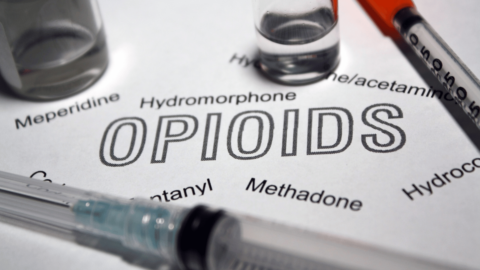Over the decades, the journey of opioid dependence treatment has evolved significantly. Starting with the earliest medications designed to help people overcome opioid addiction, treatment options have gradually become safer, more effective, and more convenient. Today, medications like Suboxone and Belbuca offer individuals a real chance at sustainable recovery with options that can be tailored to their unique needs.
We’ll explore the critical milestones in Medication for Opioid Use Disorder (MOUD), the role of pioneering treatments like methadone, and how newer options such as Suboxone and Belbuca fit into modern opioid recovery. Understanding these options can help make sense of the progress in addiction care and provide insight into which treatment path may work best for you or your loved one.
A Brief History of MOUD: From Methadone to Buprenorphine
Medication for Opioid Use Disorder (MOUD) began with methadone, introduced in the 1960s as the first medication designed to help people recover from opioid dependence. Methadone, a full opioid agonist, works by fully activating the brain’s opioid receptors, reducing cravings, and blocking the effects of other opioids. This potent relief was groundbreaking at the time but required close monitoring, typically administered in clinics, which limited accessibility for many people.
Buprenorphine marked the next big advancement in the early 2000s. Approved by the FDA in 2002, buprenorphine provided a safer alternative to methadone.
As a partial opioid agonist, it only partially activates opioid receptors, making it practical for reducing cravings and withdrawal symptoms with a much lower risk of misuse. Buprenorphine-based treatments could be prescribed for at-home use, which revolutionized recovery by allowing people more flexibility and privacy.
Today, medications like Suboxone and Belbuca represent the latest developments in MOUD, combining the effectiveness of buprenorphine with modern convenience and safety features.
Here’s a closer look at each.
Suboxone and Belbuca
While both Suboxone and Belbuca contain buprenorphine, they are designed for different purposes and have distinct features. Let’s explore each option and what makes it unique in opioid dependence treatment.
What is Suboxone?
Suboxone, a combination of buprenorphine and naloxone, is designed with a safety feature to prevent misuse. If someone tries to inject Suboxone, the naloxone component activates, blocking opioid effects and discouraging non-prescribed use, ensuring the safety of the medication.
- Administration: Suboxone is a sublingual film or tablet that dissolves under the tongue and is absorbed into the bloodstream.
- Usage: Suboxone is designed explicitly for opioid dependence treatment. Its combination of buprenorphine for symptom relief and naloxone for safety makes it a popular choice, especially for those looking to manage opioid dependence from home.
The buprenorphine-naloxone combination in Suboxone offers a balanced treatment, providing effective relief while reducing the risk of misuse. This combination offers many patients the flexibility and control needed to maintain a stable recovery routine.
What is Belbuca?
Belbuca is a buccal film, meaning it’s placed inside the cheek, where it slowly releases buprenorphine into the bloodstream. Originally approved for managing chronic pain, Belbuca is also effective in opioid dependence treatment, especially for patients with pain management needs.
- Administration: Belbuca’s buccal film adheres to the cheek lining, gradually dissolving and delivering buprenorphine at a steady pace.
- Usage: While primarily for chronic pain, its buprenorphine content makes it beneficial for those needing ongoing symptom management, particularly when chronic pain coexists with opioid dependence.
Because of its gradual release and targeted pain management capabilities, Belbuca may be more suitable for individuals whose treatment needs extend beyond opioid dependence to include chronic pain relief.
Comparing Suboxone and Belbuca: Which is Right for You?
1. Purpose and Primary Uses
- Suboxone: Primarily developed for opioid dependence treatment, Suboxone offers flexibility and safety with its anti-misuse component, making it a strong option for individuals focusing on addiction recovery.
- Belbuca, designed with chronic pain management in mind, also offers opioid dependence symptom relief. It is best suited for those who need dual-purpose treatment, effectively managing both chronic pain and opioid dependence.
2. Administration and Convenience
- Suboxone: Its sublingual form (under the tongue) allows for quick administration and effectiveness, with the added benefit of at-home dosing.
- Belbuca: The buccal film provides a discreet, slow-release form of buprenorphine, allowing for more consistent pain and withdrawal management throughout the day.
3. Efficacy and Suitability
- Suboxone: Suitable for individuals primarily focused on managing opioid dependence, Suboxone’s naloxone component reduces the risk of misuse, offering effective, safe treatment for most patients.
- Belbuca: Effective for those with chronic pain alongside opioid dependence, Belbuca’s continuous release may provide a steadier effect that supports both pain management and withdrawal relief.
Why Suboxone’s Buprenorphine-Naloxone Combo is Unique
Suboxone’s unique combination of buprenorphine and naloxone addresses opioid dependence with both effectiveness and a built-in safety guard:
- Buprenorphine serves as the active agent, curbing cravings and withdrawal by partially activating opioid receptors, which helps stabilize mood and reduce dependence symptoms.
- Naloxone is included to discourage misuse. When taken as directed under the tongue, naloxone remains inactive. However, if someone attempts to inject Suboxone, the naloxone component will block opioid receptors, preventing any euphoric effects.
This combination makes Suboxone a trusted, practical choice for opioid dependence, empowering patients to manage symptoms safely and confidently.
FAQs: Belbuca vs. Suboxone
What’s the main difference between Belbuca and Suboxone?
Belbuca contains only buprenorphine and is often used for chronic pain, though it can also support opioid dependence. Suboxone combines buprenorphine with naloxone, a safeguard that reduces misuse, making it a top choice for opioid dependence treatment.
Which medication is better for opioid dependence?
Suboxone is generally more suitable for opioid dependence because it includes naloxone to deter misuse, providing safer at-home use. Belbuca can be beneficial for individuals managing both chronic pain and opioid dependence.
Can I take Suboxone or Belbuca at home?
Yes, both can be prescribed for home use. Suboxone is widely accessible via telemedicine services like QuickMD, making it easy to manage treatment from home.
How do I get a prescription for Suboxone or Belbuca?
Both medications require a prescription. With QuickMD, you can consult with a licensed provider online to see if Suboxone is right for you, starting treatment conveniently from home.
Starting Your Treatment with QuickMD
If you’re considering Suboxone as a treatment option, QuickMD provides a simple, supportive way to start, all without the stigma. With QuickMD’s telemedicine services, you can contact a licensed provider for a consultation from the comfort of your home, discuss your symptoms and needs, and—if appropriate—receive a Suboxone prescription.Visit QuickMD to learn more and discover how accessible, compassionate care can be. With the proper support, recovery is within reach, and QuickMD is here to guide you toward a healthier, more empowered future.




